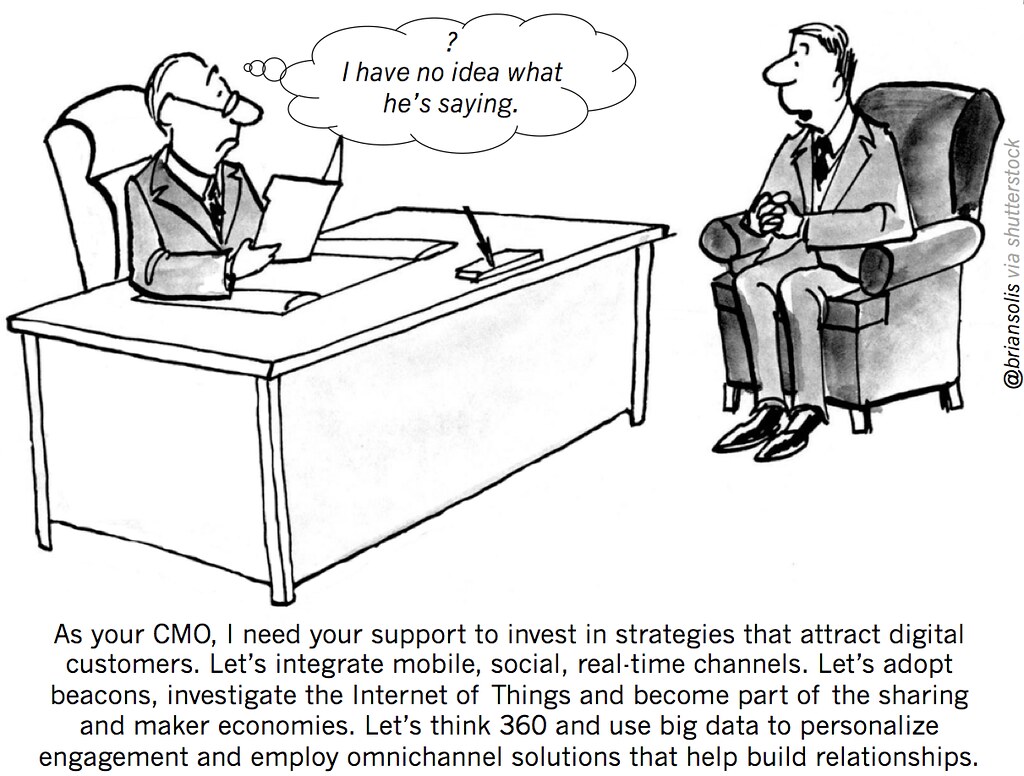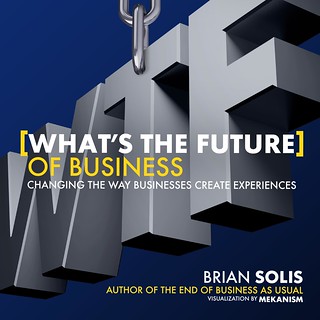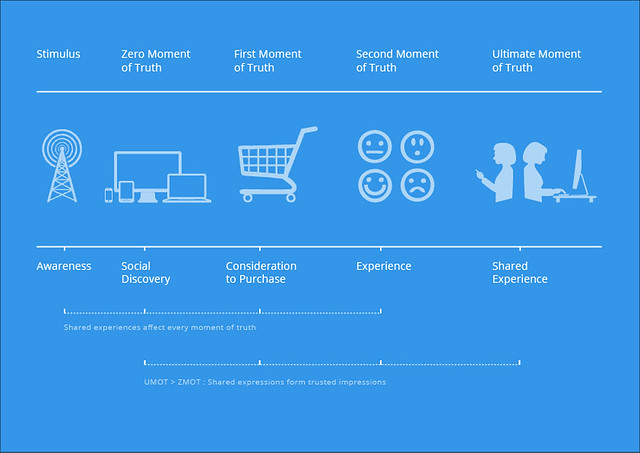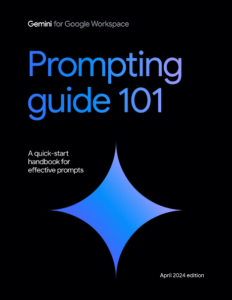As Joe Pine and Jim Gilmore wrote in the Experience Economy: Work Is Theater & Every Business a Stage, the future of business is less about products and more about creating experiences. That’s right. You’re no longer in the product business. Products are a by-product of experiences you set out to create. Products are also social objects that spark desirable relationships between you and customers and also among customers.
The future of business is experiences.
One year after launching What’s the Future of Business (WTF): Changing the Way Businesses Create Experiences, I had the opportunity to tell the story behind the book and why experiences are…everything. I joined #MMchat hosted by Jeff Ashcroft (@TheSocialCMO), a weekly marketing chat on Twitter dedicated to helping CMOs and senior marketing strategists learn how to change their businesses.
I wanted to share the conversation with you here to reveal a more personal side…the intentions, decisions, and stories behind #WTF:
– Why did I focus on experiences?
– How exactly are experiences the future of business?
– What was my inspiration for designing the book the way I did?
You’ll notice that each question and answer is less than 140 characters…
Question 1: #WTF have you been doing for the past year+? #MMchat
The launch has been equally exhilarating, challenging + insightful. The book has done very well. It’s been a hustle though #MMchat
With each book, it gets harder, not easier, to compete for attention and also my share of $15.
Everyone is so busy these days…competing for mindshare in the moment and the future at the same time is humbling.
Tell us a bit more about #WTF. What was the inspiration for the book?
I am fascinated by experiences and how in a connected world, it is shared experiences that define our relationships.
I believe that shared experiences are driven from emotion and less about transactions.
Engagement is about creating experiences. Experiences are about expressions and not impressions. What should ppl feel and say?
I wanted to write a book that was an experience to demonstrate the purpose and possibility of being thoughtful at a higher level.
I set out to make a print book matter in a digital economy. I studied UX + was really thoughtful about the message I wanted to send.
The result…#WTF became an analog app where print is now arguably more effective than its digital counterpart.
If I could do this for a book, imagine what you can do with your product, service, or company.
Curious, does a book that’s been out for a year seem old in a digital economy?
Yes and no. A book takes time to produce. It’s not part of the real-time world we live in. It’s part of slow media.
I try to write books that are timeless-regardless of tech or trends. But even posts I wrote 6 weeks ago are “oldies but goodies.”
I wish I could take away the dates of my greatest works. People automatically think they’re old when they’re still the best.
I love book’s title. Tell us the story behind it, how you came up with #WTF & how you got that on the cover!
My last book was The End of Business as Usual. What’s the Future is about “what’s next.” half-empty vs half-full.
The fun part though is that “What’s the Future…” was intentional so that I could use the #WTF acronym 🙂
Getting #WTF on the cover was easier than I thought. @WileyBiz was very supportive. You’ll notice it’s muted on the cover though.
The subtitle is very provocative, ‘Changing the way businesses create experiences.’ Why experiences?
Experience is everything. We think too much about products, services, brands, and transactions. We often miss what people feel!
We need to create experiences. Start with what people should feel…think…share. The future of branding is experience architecture.
In the book, you focus on the MOTs (The Moments of Truth). You claim there are 4. Can you walk us through the first moment?
The Zero Moment of Truth aka ZMOT is what Google introd as that moment when someone enters the discovery. Here they “Google it”
What happens in a world when Google isn’t the 1stst step in ZMOT? What if you YouTube or a review site is first? That day is here.
In a world of shared experiences, I’d take videos vs. websites. Websites suck on mobile phones.
Besides…Websites are written for execs who approve copy & not written for customers in their language or for their context/intentions :/
I want to hear from real people like me with real experience that match my intentions not marketers or spokespeople. #amiright?
In #WTF, you introduce the UMOT, The Ultimate Moment of Truth. Please share what it is and why it’s important.
The First Moment of Truth (FMOT) and the Second (SMOT) deserve a mention. FMOT = when someone is *about* to make purchase.
SMOT=the experience someone has when they become a customer. Experiences never end though. Experiences last throughout the lifecycle.
The Ultimate Moment of Truth (UMOT) is that moment when someone shares their experience.
UMOT is the future of branding. People already share today but they do so without our influence.
UMOT = the next person’s ZMOT. Shared experiences are the expressions that define the impressions and actions of other customers.
Something key to remember though is that we tend to confuse #connectedcustomers with ourselves. We project our actions upon them.
In many ways we are AND are not our customers. Yet we make decisions+investments as if we “get” them. Much is counter intuitive.
Just because you do something a certain way doesn’t make it “the” way. Same is true for execs who see things differently.
In my research, I’ve found that the next step leads to #digitaltransformation. “What would my digital customer do?”
You can download my latest research on #digitaltransformation here.
It’s our time to define the experience we want people to have and then share and reinforce it in all we do, say and create.
You can read the entire Twitter transcript here.
Connect with me: Twitter | LinkedIn | Facebook | Google+ |Youtube | Instagram
Image Credit: Shutterstock








People often forget that they went into business to improve on an experience that they did not like when they were working for the man! Once business owners, they suddenly lose the ability to think like a consumer and eventually the user experience around what they have created becomes quite bland. Some businesses will have a digital experience which is second to none. But their real world experience might be below average. Other businesses have it the other way around. And then there are those businesses that get both wrong! The real world and digital experience must support each other. From front of house all the way through to the C suite and then on through to the digital footprints that surround the brand – all must align and complement the other. If they don’t, then #WTF!
so well said…
Even without an app, platform or expensive software program, we still manage to knock the socks off new clients and even opposing counsel when they walk through the front door of our law firm.
How?
We great them with a big smile 🙂 And it gets even better. We then ask the all-important question (while meaning every single word), “How can we help you right now?”
Too many people overly complicate business.
Cheers Mitch!
Interesting read! It’s crazy how shared experiences still matter most today with the advent of technology and the connected consumer. it’s almost like we had to enter the technology vacuum, realize it was too calculated and impersonal, and shift our values once more to the human side of business interactions. Now, app developers are trying to connect, as you say, “emotions and transactions” to create the ultimate experiences that use modern technology in personal ways. It all comes full circle!
Such great thoughts. Thank you
Such great thoughts. Thank you
One of the challenges we meet is that businesses think of experiences in squishy terms which are hard to quantify, to measure and to link to P&L statements. There is a disconnect between the most commonly used measurement methods by the businesses and their customers – businesses need metrics and use CSAT or NPS to measure customer experience, while the consumers use the stories told by the customers who share their experiences. Too bad the professionals in charge prefer to debate the pros and cons of the measuring methods and/or technology investments instead of addressing core challenges.
Very true…
Very true…
Struck by the simplicity and significance of your ZMOT to UMOT model. There is so much “noise for the sake of noise” in so many of today’s digital practices. Certainly, that will eventually crystallize into less chaos and more credibility. But the increasing recognition of the value and impact of creating user experience is a big step. Better messaging (storytelling) and engagement will quite naturally drive the sharing and credibility that will achieve whatever the goals are. Thanks for your thoughts, and God speed the coming excitement of a less chaotic and more powerful digital space.
Thank you Mark. Very much appreciated!
Thank you Mark. Very much appreciated!
Useful info and very simply put (love the diagram). We’ve been talking about switching from the product focus to selling experience. It’s evident that many companies in the “hosting” and “get website” industry are doing it. Thanks.